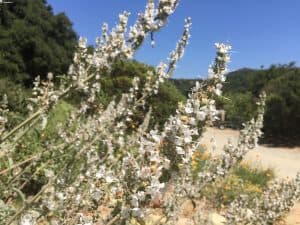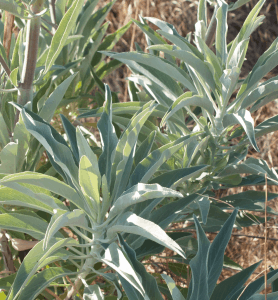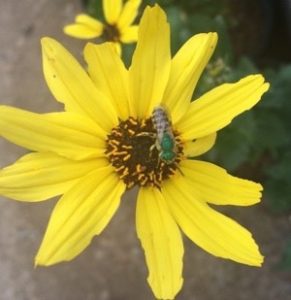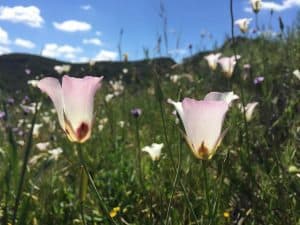
Saging the World: Indigenous Wisdom & the Cultivation of White Sage
March 7, 9:30 am – 11:00 am
A fire went through our family’s sage gathering ground, and maybe five acres of white sage just burned to the ground. I was upset, but my uncle said, ‘It’s good—the world just needed saging off.’—Tima Lotah Link, Shmuwich Chumash
California Indians have been using white sage for food, medicine and ceremony for thousands of years. This region is the epicenter for white sage, as well as black sage, Cleveland sage, hummingbird sage, thistle sage, and chia.
The commercialization of white sage has become international in scope. Walmart, Etsy, and Amazon all market smudge sticks, sage bundles, sage essential oil, and”cleansing” kits with abalone shells and feathers, fueling a growing controversy around cultural appropriation.
Much of the white sage for the international market is unscrupulously foraged. Tongvaeducator Craig Torres tells us: “If we don’t fight to protect the plants and to protect the land, they’re no longer there for us. The connection to who we are as a people has everything to do with the plants.”
 Acjachemen educator Heidi Lucero grows sage. “If you live in California, there’s no need to wild gather. Grow your own! The climate is perfect. Save your $10 on a sage bundle and buy a plant that gives you sage all year long.”
Acjachemen educator Heidi Lucero grows sage. “If you live in California, there’s no need to wild gather. Grow your own! The climate is perfect. Save your $10 on a sage bundle and buy a plant that gives you sage all year long.”
We hope you’ll join us in cultivating white sage in your gardens or nurturing the plants in containers on your decks, porches, and windowsills. You’ll attract bees, butterflies, birds, and other beneficial insects. You’ll better understand how the health and well-being of our species is inextricably connected with the plants that sustain us.
You’ll be creating a more resilient future. You’ll be Saging the World.
 March 14, 9:30 am – 10:30 am
March 14, 9:30 am – 10:30 am
March 21, 9:30 am – 10:30 am

POSTPONED due to health precautions. Please check here for future updates.
5 Senses in the Natural Garden
Join us for a special Spring kickoff workshop/conference with a lively discussion about the way California natural gardens provide unique opportunities for us to use our five senses; sight, sound, taste, smell, and feel. We also will focus on that sixth sense, the one called “wonder,” which we experience when we engage with nature. On a practical note, we will review the basics of making a reciprocal sensory garden with demonstrations of concrete examples, including design principles and plant combinations. You will not want to miss “Five Senses in the Natural Garden.” Our panel of instructors includes the following TOLN amigos that regularly present on the topics of their expertise.No charge. The workshop will be held rain or shine. Looking forward to seeing you here.Check out the full schedule here.